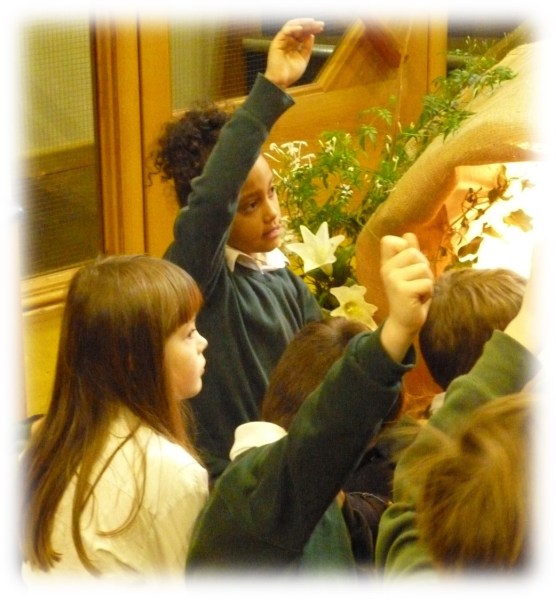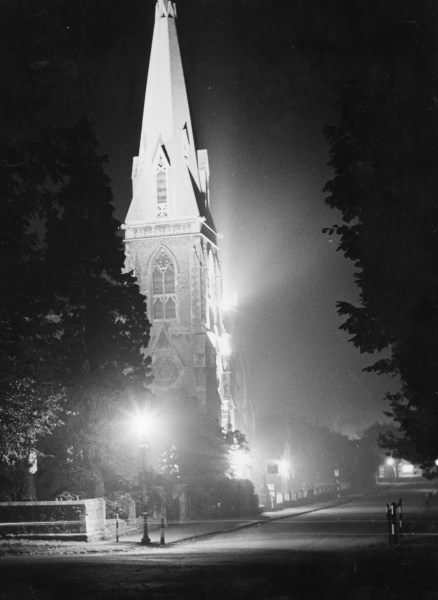
About Us

Mission Statement: Serving God, Serving Each Other, Serving Community
Our church’s aims and objectives are the celebration of public worship, teaching of the Christian faith, mission and evangelism, and pastoral work visiting the elderly, sick and bereaved. Our calling is to speak of God and faith in ways that make sense to all involved.
Fellowship is open and accepting. Trinity is both URC and Methodist, and has adopted features of both. The congregation has members who were originally URC or Methodist or of other denominations. Members of Trinity now come from lots of different backgrounds (Methodist, URC, Anglican, Roman Catholic etc).
Trinity is a friendly and welcoming church and aims to provide a place where people can find out about God in an inclusive and open way. Worship is largely traditional. The Church is supported in its worship by a choir, and there are a number of pianists/organists who play for services. The Church uses a projector and screen to assist the worship. The Communion is an open communion where all are welcome.
As well as church services, church members meet together in a number of smaller fellowship groups and house groups. Many members of the congregation make an active contribution to the life and work of the Church
Trinity is an active member of the Church in Abingdon which is a thriving ecumenical project comprising 14 local churches.
Trinity provides facilities to the local community: elderly, young people (toddlers and uniformed organizations), people with special needs, and community groups. We support other charities in the UK and overseas. We work in supporting children and teachers in local schools.
We have a policy of open access for non-church members to get married, have children baptised or hold funerals in the church.
A little recent history
The present united church dates officially from 1978 although the Congregationalists (now United Reformed Church) began sharing the building for worship with the Methodists ten years earlier.
Our Building

Trinity Church is situated on a large site in Conduit Road, off Ock Street, Abingdon. The main church building is separated by a lawn and gardens from the Conduit Centre: an extensive hall block with a small adjoining car park. The main church building opened in 1875 and has a 128 ft high spire. Its interior consists of a sanctuary with stained glass windows, entrance to which is through an attractive Welcome Area above which there is a small gallery. Overall there is flexible chair seating for 300 people.
The Conduit Centre contains a large hall capable of seating 150 people, four small committee rooms, two offices, and a well-equipped kitchen. All these buildings are used extensively on Sundays and during the week both for church and community activities.

More Ancient History
The Record of Ministry Board in the North Porch at Trinity shows a record of ministry going back to 1700 through Congregational and Methodist chapels and churches.
The Congregational Meeting House opened in The Square from 1700. Before that there is a record of a house in Ock Street being leased to Presbyterians, or dissenters. This became possible after the ‘Act of Toleration’ in 1689 which allowed Non Conformist dissenters to meet legally. An early report of the Meeting House describes a Sunday Service ‘The clerk sat at his desk beneath the pulpit, his duty to announce the hymns, tunes, and notices. On one side of the crowded gallery sat the men, on the other the women, the pews on the ground floor being occupied by families. In various parts of the building men from the villages stood, clad in long smocked coats, tired after their long weeks work in the fields – standing lest drowsiness rob them of even a crumb of the truth by which they lived.‘ The Congregational Church was build in the Square in 1862 and continued as a place of worship until 1969 when the members started to share the Trinity Church building. In earlier times the Congregationalists had had a close relationship with the Baptist churches in the Town, the Upper and Lower meetings as they were called.
The first recorded Wesleyan Methodist chapel opened in Stert Street in 1823. They moved to a chapel in Ock Street in 1847. Then in 1875 they moved to the current building. The chapel had become overcrowded, and the minister at the time, the first Wesleyan preacher in Abingdon to hold a degree, Rev Samuel Atkinson took on a lot of the planning and fund raising, strongly supported by John Creemer Clarke, a leading lay member, and clothing manufacturer. Mr Clarke gave a lot of the money and effort towards its foundation so that initially it became known as “Clarke’s Chapel”. There were also Primitve Methodists (or Prims) meeting in Abingdon from 1835 in Spring Road and then Ock Street. One of their travelling preachers was jailed for 3 months with hard labour for selling hymn books and magazines without a licence. They finally joined with Trinity in 1945.
As Abingdon grew northwards a new church ‘All Saints’ was built in Appleford Drive in 1959. Half of the congregation stayed at Trinity and half moved to All Saints. When the Congregational Church in the Square was vacated by the Congregationalists joining Trinity, the intention was that the funds would go towards a new church in South Abingdon. However, after planning difficulties, the sum realised from the sale was not what had been expected, and this plan did not proceed. The money was put to good use in 1984 with the development of the Conduit Centre for the benefit of the local community. Consolidating the united church at Trinity took time and commitment.
